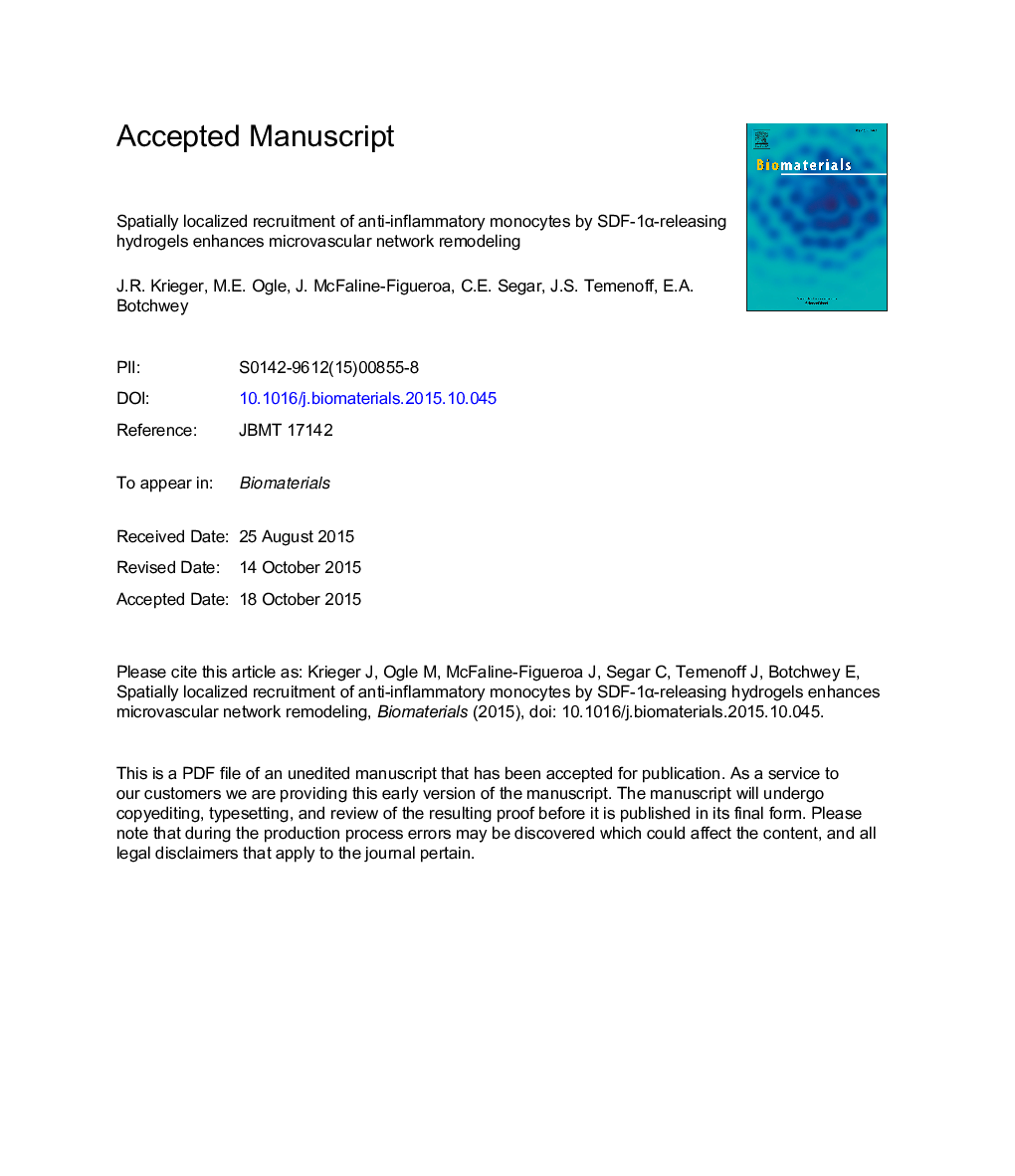| Article ID | Journal | Published Year | Pages | File Type |
|---|---|---|---|---|
| 6485253 | Biomaterials | 2016 | 38 Pages |
Abstract
Tissue repair processes are characterized by the biphasic recruitment of distinct subpopulations of blood monocytes, including classical (“inflammatory”) monocytes (IMs, Ly6ChiGr1+CX3CR1lo) and non-classical anti-inflammatory monocytes (AMs, Ly6CloGr1âCX3CR1hi). Drug-eluting biomaterial implants can be used to tune the endogenous repair process by the preferential recruitment of pro-regenerative cells. To enhance recruitment of AMs during inflammatory injury, a novel N-desulfated heparin-containing poly(ethylene glycol) diacrylate (PEG-DA) hydrogel was engineered to deliver exogenous stromal derived factor-1α (SDF-1α), utilizing the natural capacity of heparin to sequester and release growth factors. SDF-1α released from the hydrogels maintained its bioactivity and stimulated chemotaxis of bone marrow cells in vitro. Intravital microscopy and flow cytometry demonstrated that SDF-1α hydrogels implanted in a murine dorsal skinfold window chamber promoted spatially-localized recruitment of AMs relative to unloaded internal control hydrogels. SDF-1α delivery stimulated arteriolar remodeling that was correlated with AM enrichment in the injury niche. SDF-1α, but not unloaded control hydrogels, supported sustained arteriogenesis and microvascular network growth through 7 days. The recruitment of AMs correlated with parameters of vascular remodeling suggesting that tuning the innate immune response by biomaterial SDF-1α release is a promising strategy for promoting vascular remodeling in a spatially controlled manner.
Related Topics
Physical Sciences and Engineering
Chemical Engineering
Bioengineering
Authors
J.R. Krieger, M.E. Ogle, J. McFaline-Figueroa, C.E. Segar, J.S. Temenoff, E.A. Botchwey,
